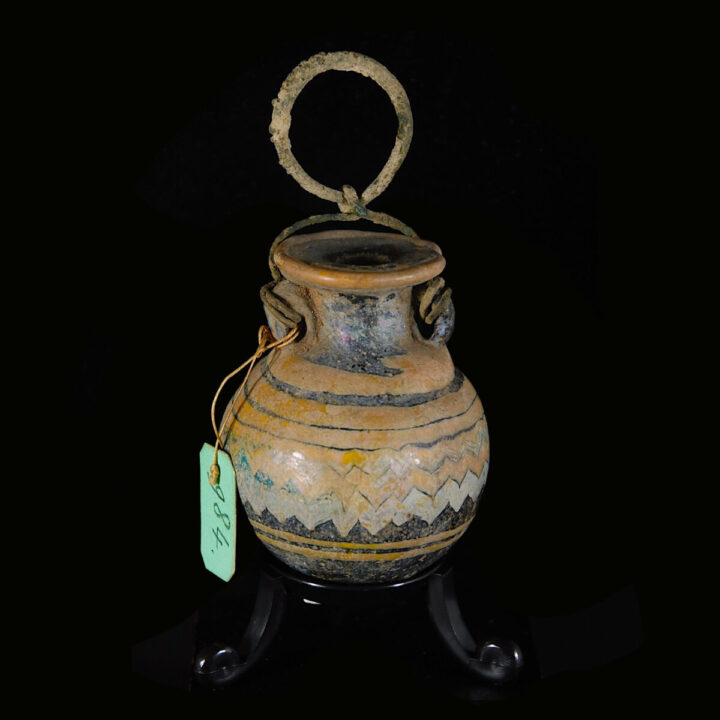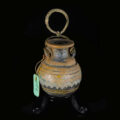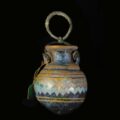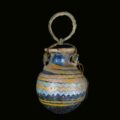Eastern Greek Core-Formed Glass Aryballos with the Original Bronze Suspension
Culture: Greek
Period: 6th-5th century B.C.
Material: Glass
Dimensions: 5.8 cm high (glass); 9 cm high (with bronze hanger)
Price: Sold
Ref: 2495
Provenance: From the private collection of the French archaeologist Louis-Gabriel Bellon (1819-1899). For over 120 years in a family estate. Accompanied by a French antiquities passport.
Condition: A small indentation on the rim, which probably was caused in ancient times while carrying the glass on the bronze wire. Otherwise, intact and rare with the bronze suspension.
Description: Opaque, blue glass with a spherical corpus, short neck and flat rim. Yellow and white decorative threads are coiled straight on the shoulder and on the lower part of the body, in between several rows of applied wavy decorative bands. On the rim a yellow glass thread. The original bronze wire is still wrapped on the handles on the shoulder and is knotted at the top to form a large loop. In this way the aryballos, which probably held precious oils for body cleansing, was affixed on the cloth and carried around. Regarding the production: In the sand core technique, sand containing clay was formed into the core of the future vessel. The vessel was formed by immersing the sand core in the glass melt. After slowly cooling down, the sand core was removed and only the valuable hollow vessel remained. On a foot ring. With an old collection label with the number 984.






